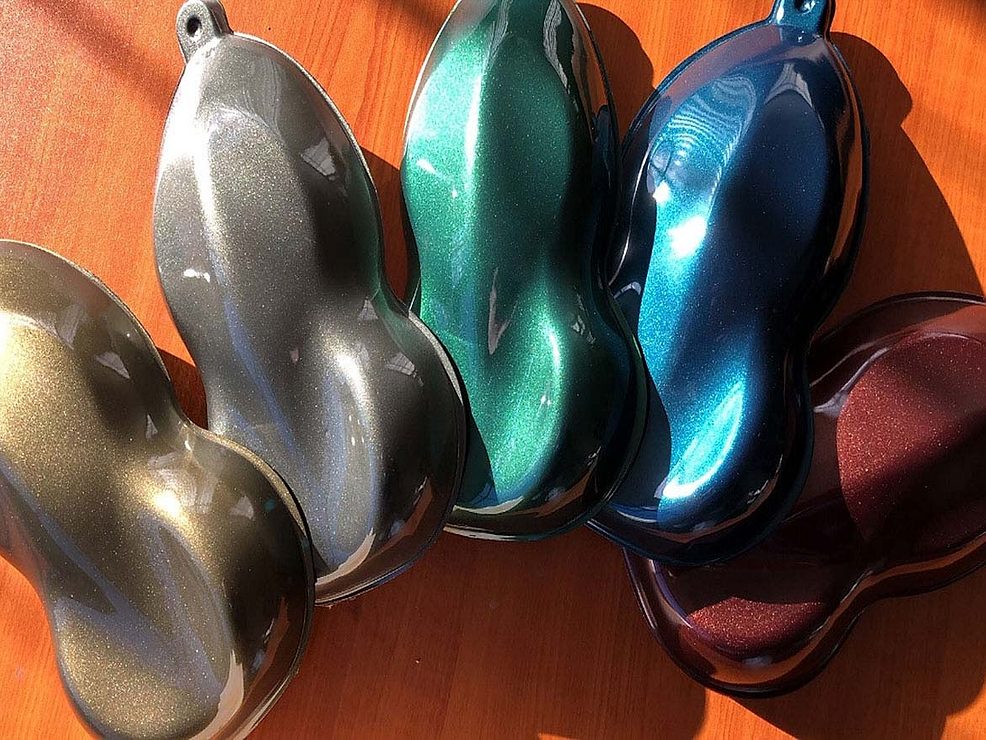
Stamping and cutting oils are a necessary part of manufacturing metal products, but these materials cause substantial problems on the plating line. Oils that are removed from parts in cleaning baths are difficult to extract from the baths themselves. They quickly migrate throughout the entire process, clogging tanks and plating barrels farther downstream. Dumping the cleaners frequently can help minimize oil buildup in the plating line, but this solution presents its own problems. Both the disposal and the replacement cleaner are expensive, and the environmental impact of dumping the cleaners must be considered.
One of the easiest ways to eliminate oil problems is to use a demulsifying agent. These chemicals are designed to separate the oils from the cleaners, allowing the oils to be removed easily from the cleaning baths before they can migrate downstream. The result is less maintenance, less waste, a more efficient process and a higher-quality finish.

Table 1.
Case in Point: Two Plating Lines
A chloride zinc barrel line operating 18 shifts per week was experiencing heavy contamination from emulsified stamping and cutting oils. The line uses a highly alkaline emulsifying soak cleaner in two 200-gal tanks without electrocleaning.Hoping to skim the oils off the top of the baths, the plant tried cooling the baths at the end of each week, but cooling did not produce any appreciable quantities of displaced oils. Significant emulsified oil buildup developed rapidly in downstream process tanks, and plating barrels were coated heavily with oil. In an effort to reduce oil contamination, the plant dumped its cleaners weekly. Unfortunately, this solution was only partially effective, and the disposal fees and cleaner makeup chemicals added substantial costs to the plating process.
Finally, the plant decided to try a demulsifying agent. An offline treatment tank with automatic skimmers was installed to remove the displaced oils continually from the cleaners. Approximately 1% by volume demulsifying agent was then added to the cleaner to split the oils, which then floated to the top.
Early on, 10 to 20 gal of oil were removed in each treatment. Within a few days, all of the downstream tanks were cleaner. The cleaner tanks resulted in a steady improvement in the quality of the plated finish.
This installation now uses three soak cleaner baths; two are in use, while a third is being treated. A daily treatment of 0.4% by volume of demulsifying agent in each 200-gal cleaner bath allows the plant to skim 55 gal of oils per week. This procedure keeps the cleaners optimized, eliminates dragging contaminants down the line, and maintains a consistently good-quality finish. In addition, the cleaners are no longer dumped, and waste oils are recycled rather than being shipped for disposal. These changes have allowed the plant to save more than $5,000 per year. A breakdown of the cost savings is shown in Table 1.
Another chloride zinc plating operation was faced with eliminating oils in its waste stream as a prerequisite to installing a new waste treatment system. The plant runs four barrel lines 10 hours per day, five days per week, and cleans parts in a 500-gal soak cleaner. Oil carryover in this plant was not as severe as in the other operation, and the plating quality was acceptable. Manual skimming produced 1 to 2 gal of oil daily.
Inline batch purification was used, adding 1% by volume of demulsifying agent. Copious oil splitting was accompanied by a blackish sludge. Skimming produced 18 gal of oily sludge. Repeating this treatment produced 30 more gal of oil. Before long, much less oil was observed in downstream tanks, and both plating quality and cleaning efficiency improved.
The plant now adds 0.1% by volume of demulsifying agent daily and skims 5 to 7 gal of oil per day. This maintenance procedure helps keep the line operating at optimum efficiency. The cleaner is not dumped, makeup cleaner is not needed beyond the amount required for standard maintenance, and no oily soils are being fed from the line to the waste treatment system.
When Should You Use a Demulsifying Agent?
Deciding when to use a demulsifying agent requires astute observations. Plating line operators should look for the following process conditions:- Oil floating on the surface of the soak or electrocleaner
- Poor cleaning
- Short cleaner service life
- Soils dragged down the line
- Oily or discolored plating barrels
- Mechanical aids such as skimmers, weirs and overflow dams not being used or not optimized
- Apparent cleaning problems affecting the quality of the finished parts
- Excessive downtime and use of waste treatment chemicals related to oily cleaner dumps
After successive treatments, a decrease in the volume of skimmed oil will indicate purification of the cleaner bath. At this point, most of the problems related to oil contamination should be resolved, and mechanical aids should be more functional.
Demulsifying agents are a quick, dependable product that can increase the quality and efficiency of most metal finishing lines.
This article was provided by the technical staff at Hubbard-Hall Inc., Waterbury, CT, an independent distributor of demulsifying agents and other plating and finishing chemicals. For more information, call 203.756.5521 or visit www.hubbardhall.com.
SIDEBAR: Oil Reclamation
By helping plating operations keep their cleaners closer to optimum conditions, demulsifying agents also help companies meet another challenge: cost-effective handling of the skimmed oils. Many plating operations ship oils as a hazardous waste for proper disposal, with disposal costs ranging from $1.80 to $2.00/gal. Recyclers will pick up the oils for a minimal freight charge, typically $0.10 to $0.49/gal - for a cost savings of 76 to 95%. The reclaimed oils can be reprocessed into materials such as industrial boiler fuel, blended with #6 fuel and used as cutting stock, or blended with other additives and used as base lube stock.Metal finishers can call their local oil recycling association to remove the collected process oils. As the market for recycling has grown, disposal of the oils has become much cheaper and more environmentally friendly.



